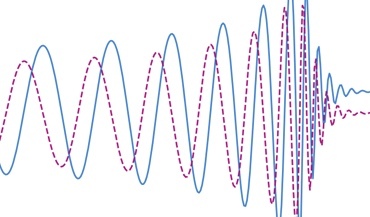 Gravitational memory and spacetime symmetries
Gravitational memory and spacetime symmetries
Symmetries of spacetime infinitely far away from gravitational fields may hint at new laws of nature
 Gravitational memory and spacetime symmetries
Gravitational memory and spacetime symmetries
Symmetries of spacetime infinitely far away from gravitational fields may hint at new laws of nature
 Building an app container with Apptainer
Building an app container with Apptainer
Guidelines for building a virtual machine with Apptainer, for code redeployment elsewhere.
 Virgo links
Virgo links
Here I provide links to sign up for Virgo mailing lists, working group activities, etc.
 Virgo-INFN computing setup
Virgo-INFN computing setup
Setting up an INFN-Virgo computing account, parallel computing
 Compact binary coalescence parameters
Compact binary coalescence parameters
Parameters of gravitational waveforms for compact binary coalescences: masses, spins, etc.
 The nanohertz gravitational wave background
The nanohertz gravitational wave background
Is the common-spectrum process observed with pulsar timing arrays a precursor to the detection?
 Utilizing the null stream of the Einstein Telescope
Utilizing the null stream of the Einstein Telescope
Evaluating data analysis challenges in the 3G detector era and discussing the solutions
 PPTA DR2 noise analysis
PPTA DR2 noise analysis
We model red noise and link exponential dips in residuals with pulse shape changes
 Spectral turnover in pulsar spin noise
Spectral turnover in pulsar spin noise
Understanding millisecond pulsar spin noise and neutron star physics
 Writing a paper in LaTeX
Writing a paper in LaTeX
Some useful tips for writing papers with LaTeX markup language and Overleaf
 Pulsar timing software
Pulsar timing software
Installation of Tempo2, Libstempo, Enterprise. Timing residuals PSD and Lomb-Scargle method.
 Useful relations in gravitational wave astronomy
Useful relations in gravitational wave astronomy
Formulae for binary evolution, etc. The list will get replenished with time.
 Short introduction to UNIX
Short introduction to UNIX
Basic commands and tips: how to use terminal on Mac, to run a program in terminal, what is bash, etc.
 Useful python commands
Useful python commands
Here I collect some useful python commands for code development
 Signals and noise in Pulsar Timing Arrays
Signals and noise in Pulsar Timing Arrays
A description of known sources of signals and noise in Pulsar Timing Array experiments
 OzStar setup
OzStar setup
Installing programs and packages, running Jupyter notebook, parallel computing with Slurm
 All-sky search for persistent gravitational waves
All-sky search for persistent gravitational waves
Artist's sketch of accreting neutron star, a possible source of gravitational waves. Image: NASA.
 MATLAB code compilation on LIGO cluster
MATLAB code compilation on LIGO cluster
This page explains how to work with MATLAB R2015a (8.5.0.197613) 64-bit (glnxa64).
 Short GRB and binary mergers (NS-NS and NS-BH)
Short GRB and binary mergers (NS-NS and NS-BH)
Visual representation of two merging neutron stars. Image: NASA.
 Notes on working with LIGO computing clusters
Notes on working with LIGO computing clusters
LIGO data structure: job files, frames, calibrations, for preproc.m (STAMP) and stochastic.m.
 Instrumentation for the Gamma-Ray Bursts (GRB)
Instrumentation for the Gamma-Ray Bursts (GRB)
Artist's representation of a GRB jets (NASA), and a 3D model of the Lomonosov satellite (MSU).